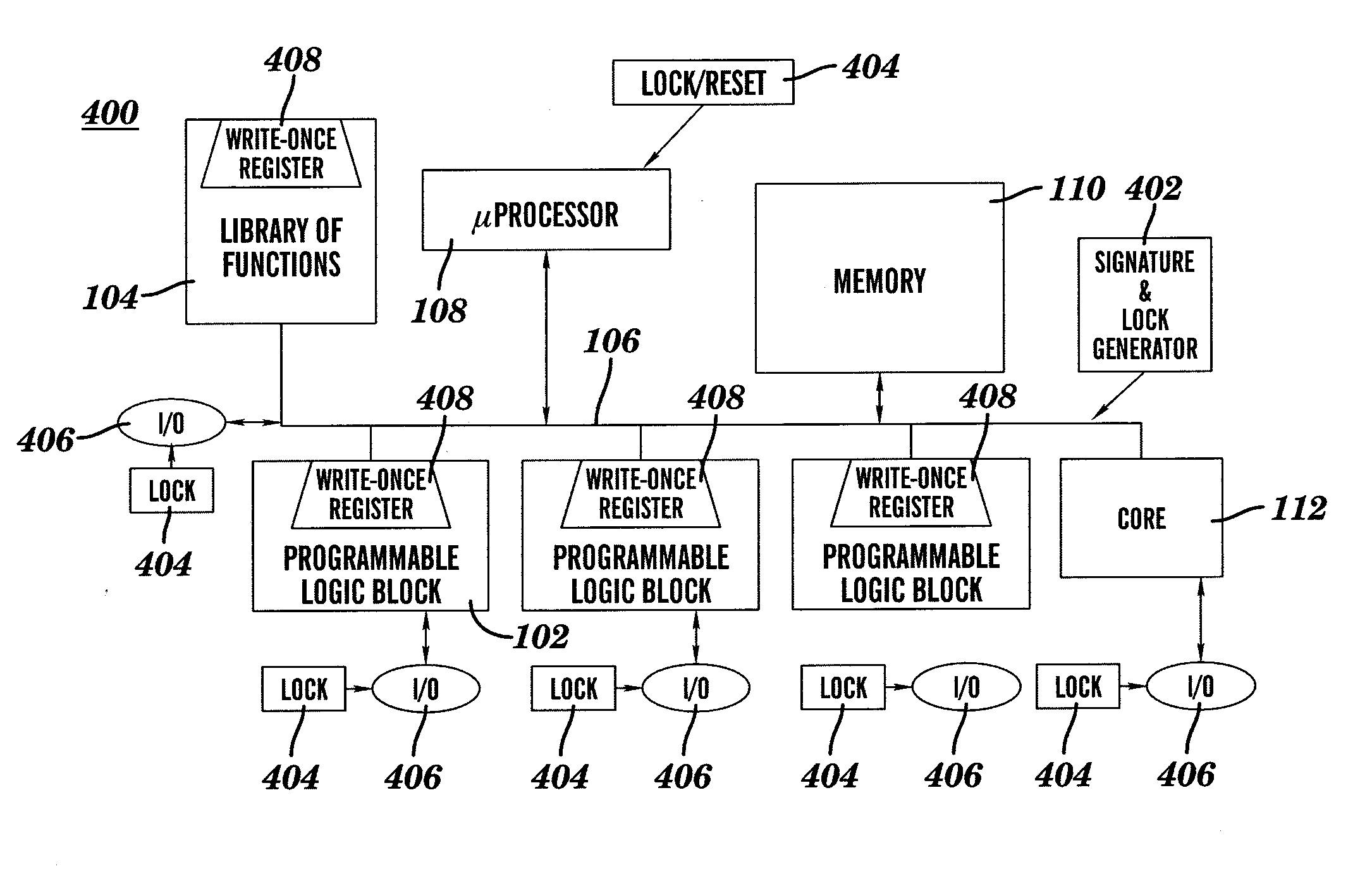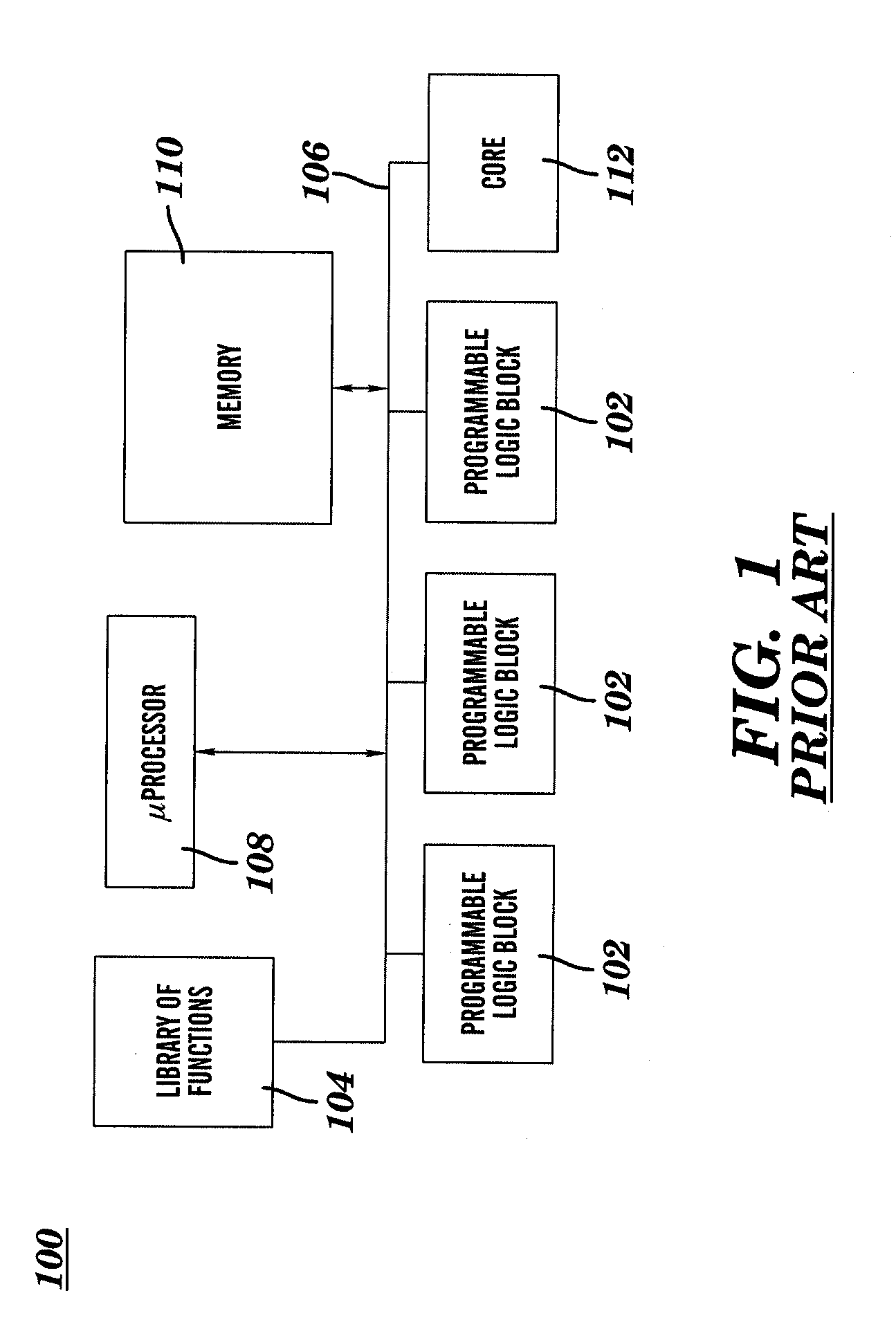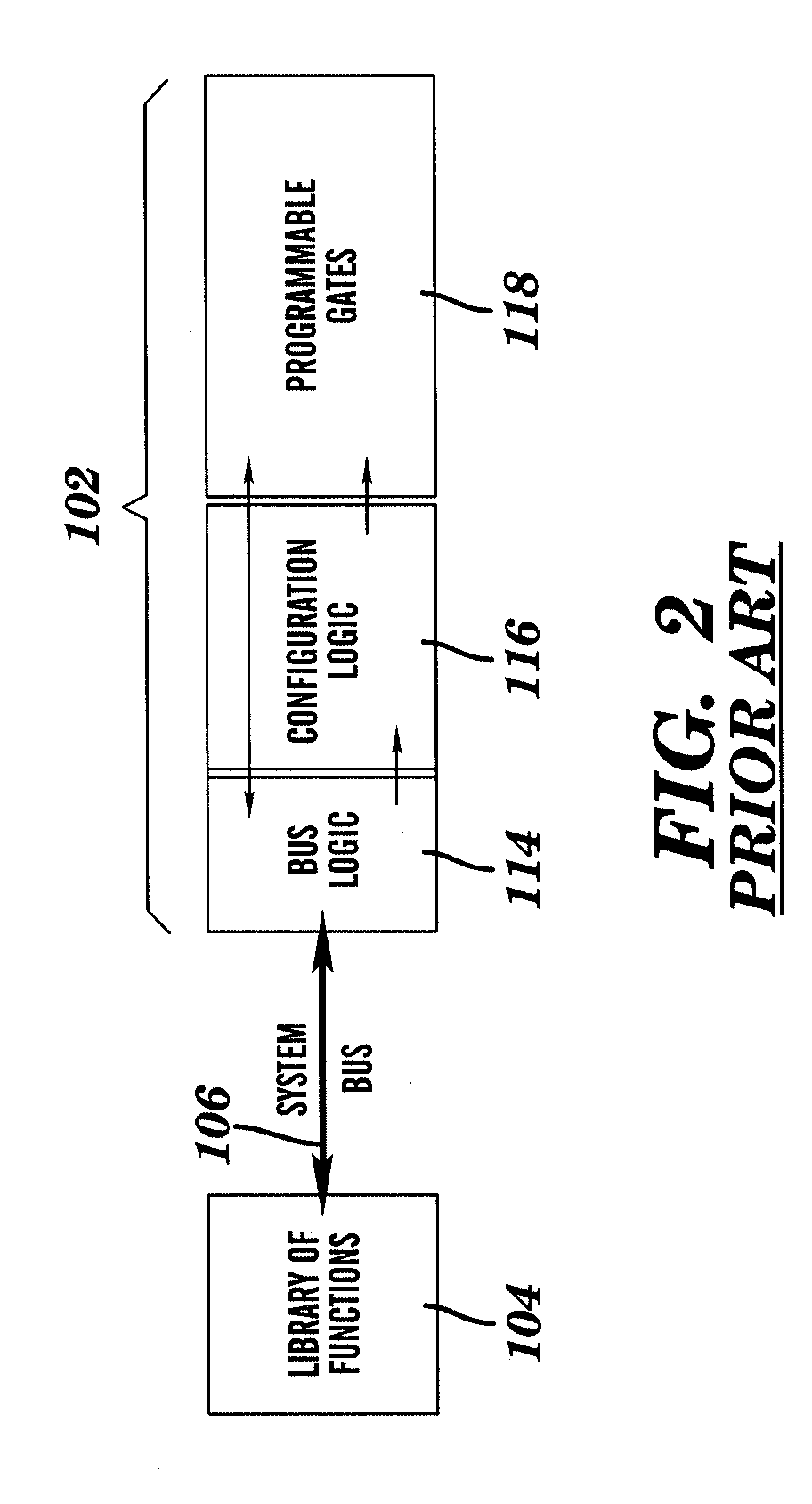Method for system level protection of field programmable logic devices
a programmable logic and system level protection technology, applied in the field of dynamic reconfigurable hardware and computing systems, can solve the problems of reducing the overall performance of the system, reducing flexibility and time to market, and reducing the flexibility of supporting a large number of general purpose instructions
- Summary
- Abstract
- Description
- Claims
- Application Information
AI Technical Summary
Benefits of technology
Problems solved by technology
Method used
Image
Examples
Embodiment Construction
[0018] An inherent problem associated with using a programmable logic structure as a reprogrammable function block is how to ascertain that only valid design information is placed into the PLS. This problem may be viewed in terms of the actual programming of the PLS, the secure transmission of the programming data across a system level bus, and secure storage of the programming data.
[0019] Referring initially to FIG. 1, there is shown a block diagram of an existing system on a chip (SOC) 100, having one or more programmable logic blocks (PLB) 102 associated therewith. The system 100 also includes a function library 104 for storing therein each of the different types of functions available for selective programming into the one or more programmable logic blocks 102. The programmable logic blocks 102 are accessible by the function library 104 through a system level bus 106. Other devices, such as microprocessor 108, memory 110 and core 112 may also have access to the system level bus...
PUM
 Login to View More
Login to View More Abstract
Description
Claims
Application Information
 Login to View More
Login to View More - R&D
- Intellectual Property
- Life Sciences
- Materials
- Tech Scout
- Unparalleled Data Quality
- Higher Quality Content
- 60% Fewer Hallucinations
Browse by: Latest US Patents, China's latest patents, Technical Efficacy Thesaurus, Application Domain, Technology Topic, Popular Technical Reports.
© 2025 PatSnap. All rights reserved.Legal|Privacy policy|Modern Slavery Act Transparency Statement|Sitemap|About US| Contact US: help@patsnap.com



